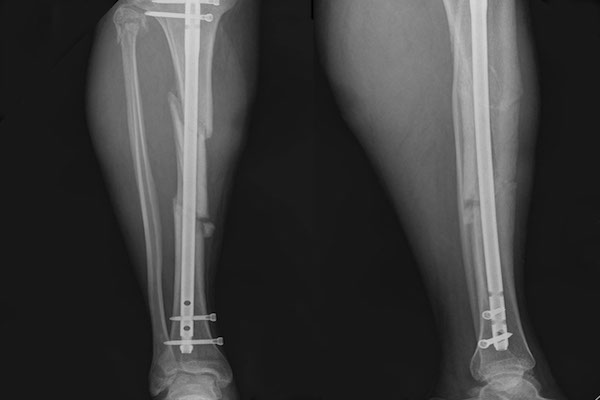Mini-invasive treatment for delayed or non-union: the use of percutaneous autologous bone marrow injection
Abstract
Delayed union or nonunion of bone fracture is becoming less frequent, but still remains a challenging clinical problem. Autologous cancellous bone grafting that is the gold standard method, often involves donor site morbidities and complications. Once these fractures have been mechanically stabilized, other local factors should be investigated to promote delayed healing. The purpose of this study was to evaluate the initial outcome of the percutaneous injection of autologous bone marrow after concentration for the treatment of delayed or nonunion. Our subjects included 10 patients of delayed or nonunion fracture (3 female, 7 male) with an average age of 28 years. All fractures were mechanically stabilized after accident. Delayed or nonunion affected the femur in 2 patients, the tibia in 5 patients, the humerus in 2 patients, and the ulna in 1 patient. Bone marrow aspirates were obtained from both the posterior superior iliac crest. Bone marrow aspiration concentrate was produced via density gradient centrifugation. Trocars were inserted in the delayed or nonunion gap under fluoroscopic guidance. The bone marrow aspiration concentrate was injected slowly. As results, all of 10 delayed or nonunion healed after treatment with percutaneous injection of autologous bone marrow. The mean time for new bone formation was 3.3 months, for clinical union was 5.2 months, and for radiological union was 11.8 months. The current study is encouraging in the initial outcome and percutaneous bone marrow implantation could be an effective and safe treatment for delayed or nonunion.

Downloads
Published
Issue
Section
License
Copyright The Author(s) 2017. This article is published with open access by BioMedPress. This article is distributed under the terms of the Creative Commons Attribution License (CC-BY 4.0) which permits any use, distribution, and reproduction in any medium, provided the original author(s) and the source are credited.
